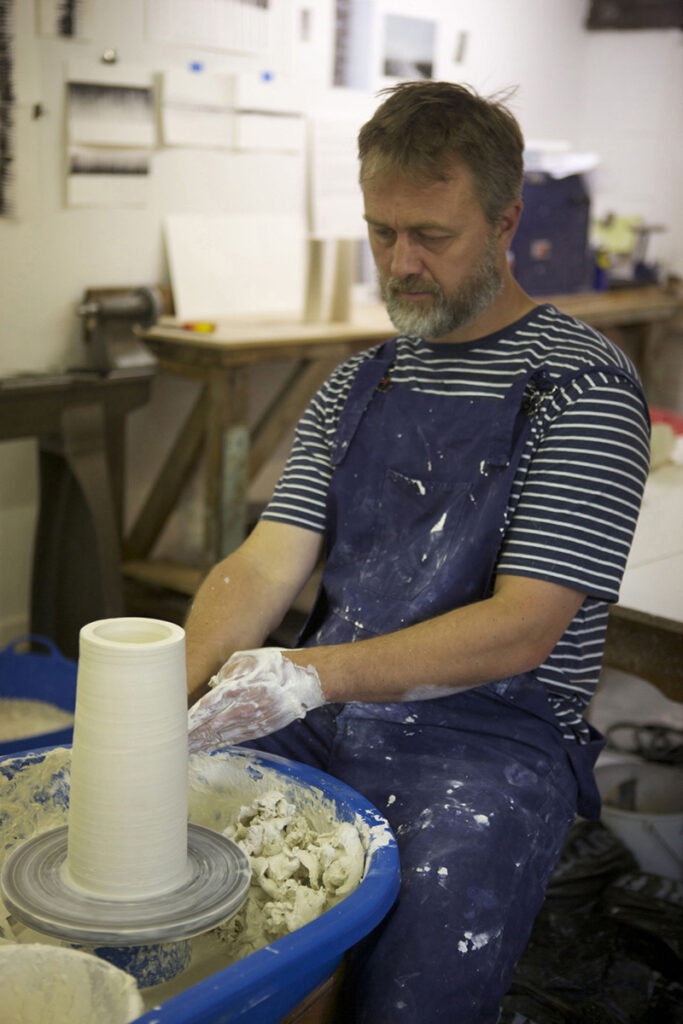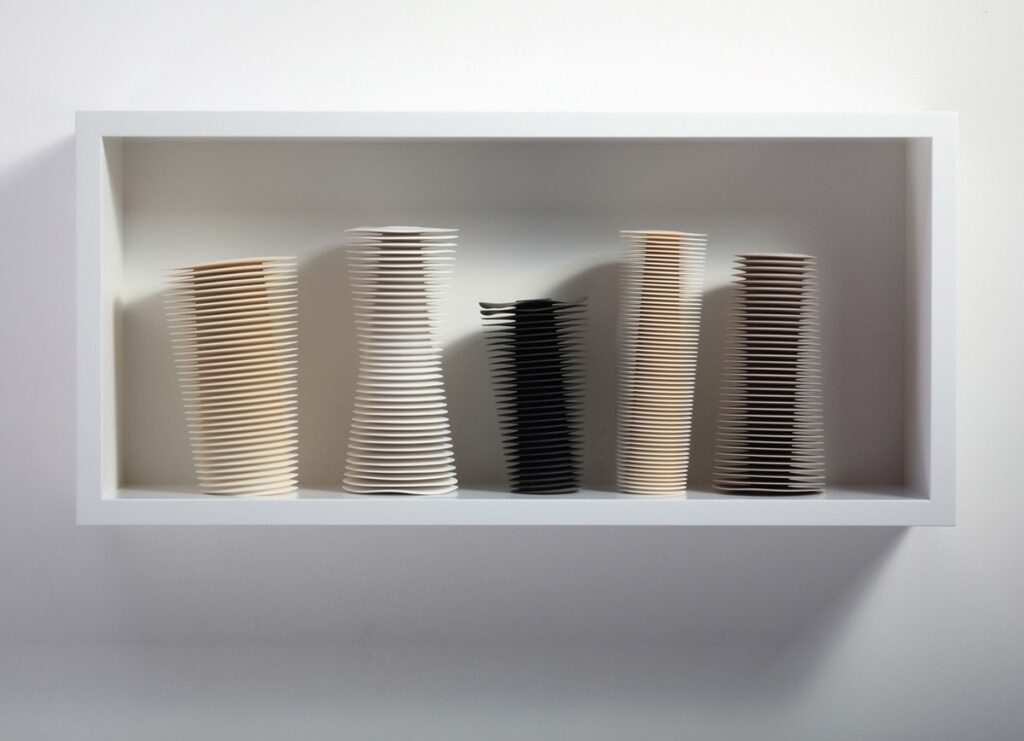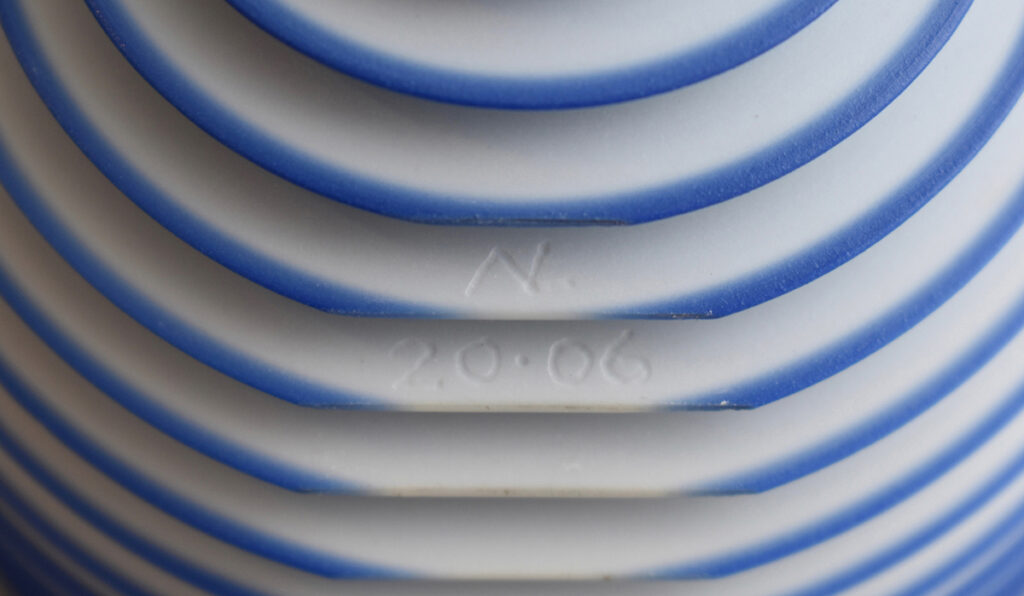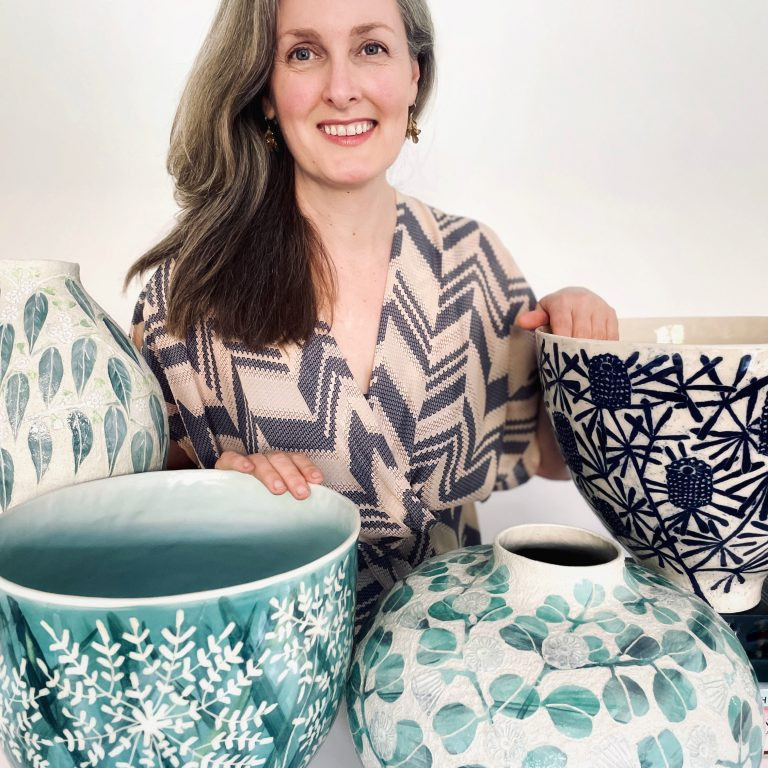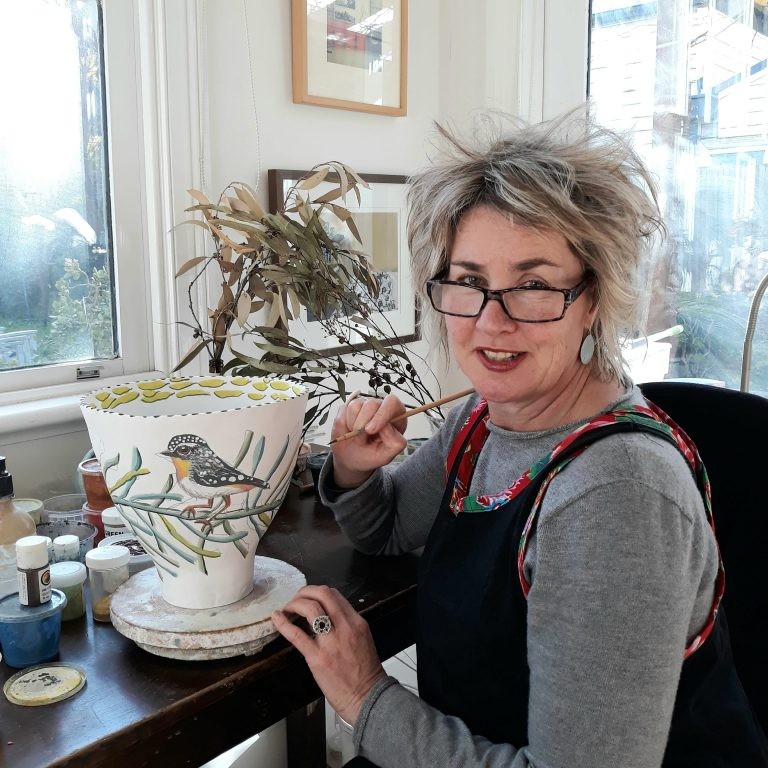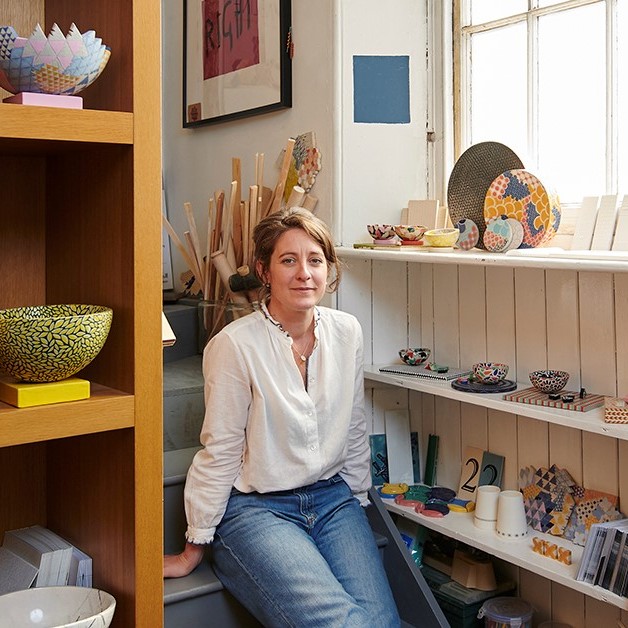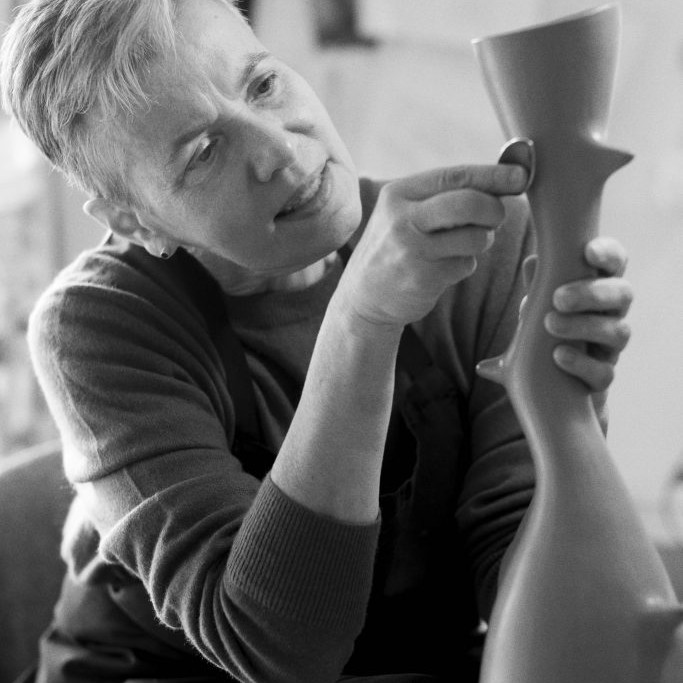Nicholas Lees Ceramic Artist
You have said, “I am intrigued in exploring the boundaries between shadows and light.” Discuss in relations to your current work.
My current body of work emerged from a research project at the Royal College of Art (London). I was investigating relationships and transitions between two-dimensional images and three-dimensional forms through various processes. Cast shadows and silhouettes became key ideas and inspirations in my research, and I found myself especially intrigued by the boundary of the shadow – the penumbra. The works are in some ways an attempt at a material manifestation of that elusive and ephemeral phenomenon. This built on a long standing interest in boundaries, thresholds and meeting points. They are always contested, uncertain and negotiable, and my works display a visual uncertainty between the definition of the space contained and the space occupied by the hollow object.
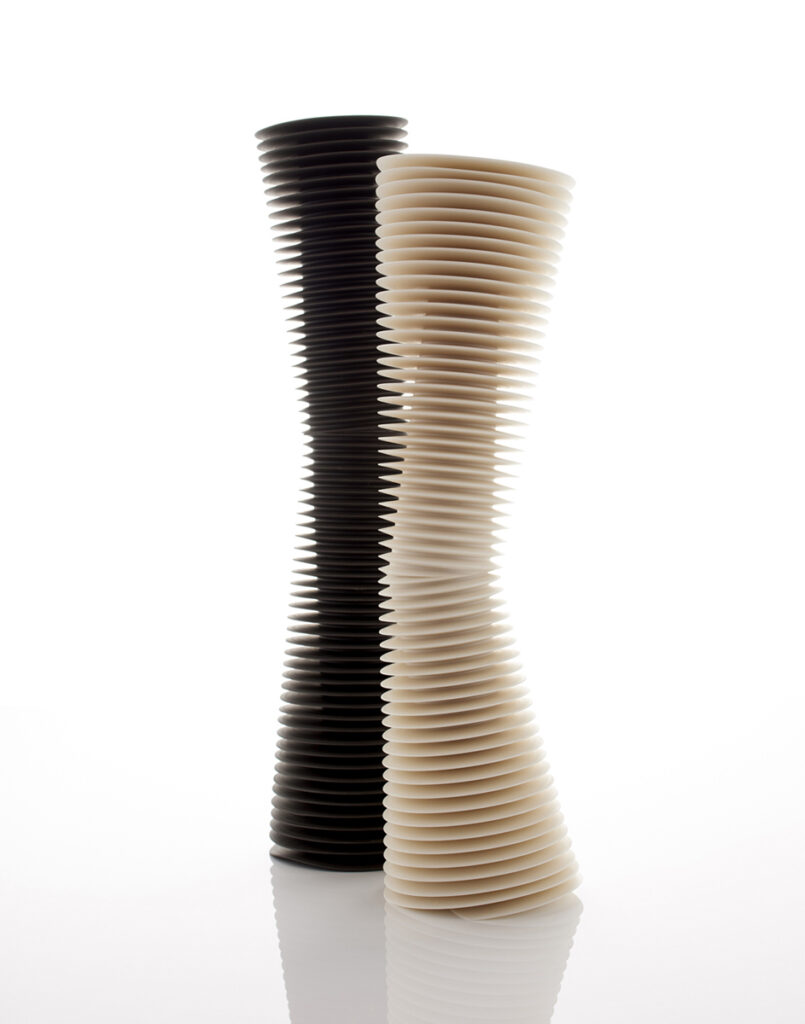
‘Angled vessels’. Black Porcelain and Parian. H 41cm. Photo Credit Sylvain Deleu
What first drew you to ceramics?
I had always quite enjoyed working with clay as a child, although without any great passion. I think I liked its potential to shift states and take on an infinity of forms. I became seriously interested aged 17 whilst studying for A levels. My teacher did raku firing with us which was incredibly dramatic and engaging, and also showed me Hans Coper’s work which I found captivating and inspiring.
What do you find rewarding in being a visiting lecturer rather than Senior lecturer?
I spent 10 years giving the majority of my time to working as a Senior Lecturer at Bath Spa University, and making some art work alongside that. Now I spend most of my time in my studio, and work as a visiting Lecturer at the RCA in London and the University of the Creative Arts in Farnham. I am very aware how fortunate I am to be able to have that balance and for my teaching time to be almost entirely focused on contact with postgraduate students. I really enjoy the process of tutorial teaching at this level.
‘Littoral 3’. H40 x W85 x D20 cm. Parian, grey parian, bone china, black porcelain, painted fibreboard. Photo Credit Jon Furley.
Comment, personally on your thoughts of passing on your skills and where if any are the boundaries shut?
I am most interested in the passing on of understandings and ways of thinking about the creative process. The notion of thinking through making – ideas having an intrinsic relationship with material and process – is very important. I do happily teach skills, although less than I used to, and I don’t see it as my role to show people how to make like me, but to help them find their own way.
On the whole I am pretty open about sharing my process as it is often very tightly linked to the conceptual content of my work.
You have been to three major institutions, Bristol Polytechnic, University of Wales, and Royal College of Art. Can you give a highlight for your time at each?
I do love to study, and have been lucky enough to return to education twice after periods of practice, and to also be continually involved on the other side of the educational fence. At Bristol I was given a great grounding in ceramics and was taught by some excellent artists of which Walter Keeler probably had the most influence on my making and an extraordinary teacher called Mike Hughes on my thinking. Four years after that the one-year MA in Cardiff was an intense period of learning and development which totally transformed my thinking and my work. There were seven of us in the cohort, and the incredible learning dynamic in the student group stood out. The opportunity to develop a new body of work at the RCA was incredible, but most important was having a year to experiment and play and question the fundamentals of my practice at that stage in my career.
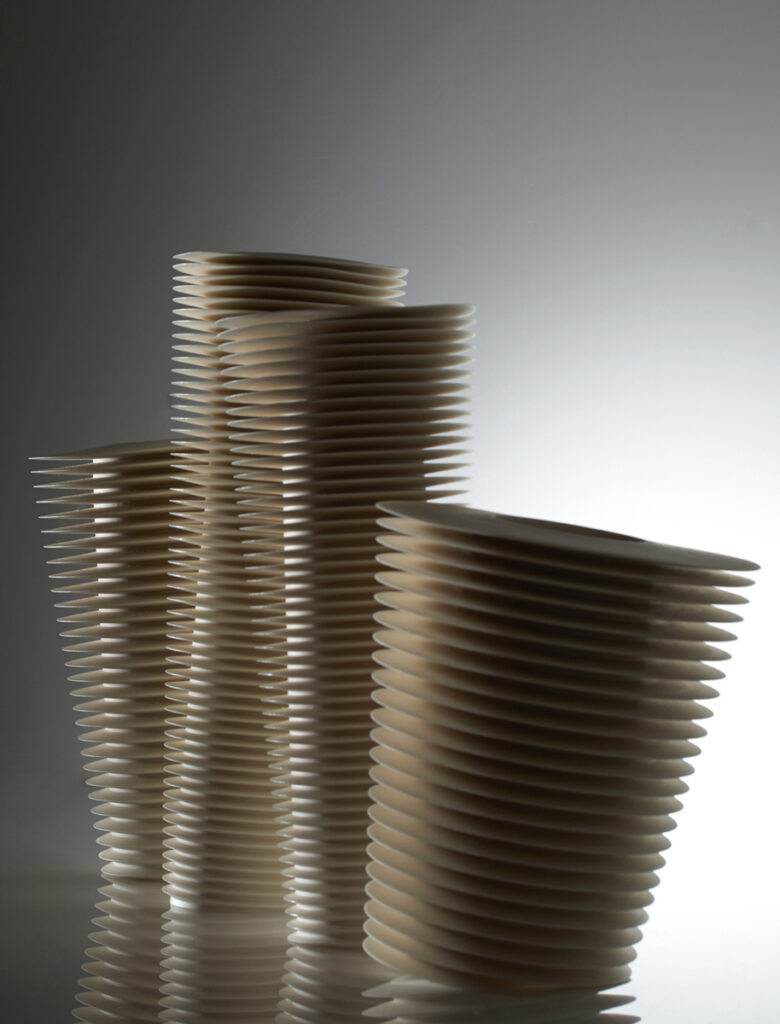
‘Four Leaning Vessels’. Parian. H 32cm. Photo credit Sylvain Deleu.
How do your drawings – ink on paper relate to your ceramic work?
The works on paper are a parallel exploration of some of the same ideas as the work in ceramic. Again, the approach is very rooted in material and practice in an exploration of the interaction between paper, ink, water and time. The time between idea and a resolved outcome in ceramic is often many weeks long – so to work in a medium where the same iteration can be achieved several times in one day is a refreshing antidote.
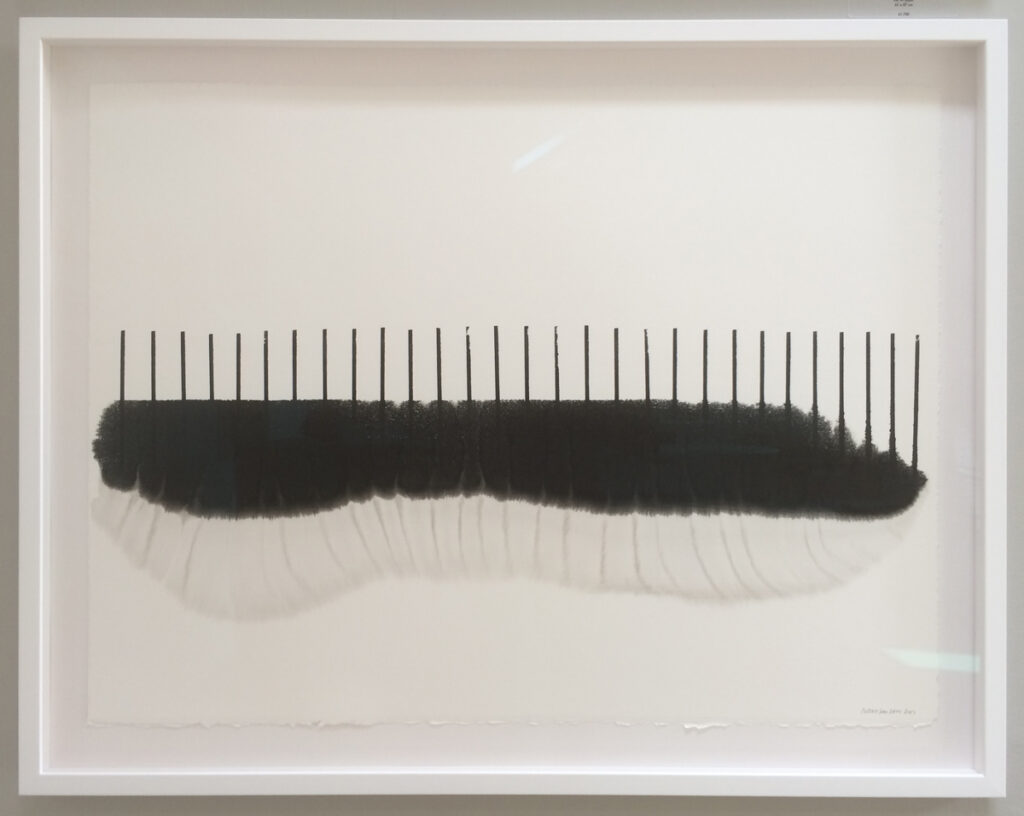
Untitled Drawing. 2017. Ink on Paper. 86 x 67cm framed
Your floating Bowls. Discuss:
Inspiration
The basic inspiration is as outlined for this evolving body of work in the answer to the first question. Specific inspiration for these pieces was to make something that was more overtly a container and to position the piece on the surface in a way which meant that it had a lightness and floating presence. Also, the fins are at an angle that helps to make the perceptible physicality of the object shift in more planes.
Grouping or not grouping of these works
Usually the works are for sale as individual pieces, but they are often photographed and shown as groupings. Grouping conveys the shifting presence of the object from a single viewpoint. What is perceived is dependent upon the relationships between object, light, space and body.
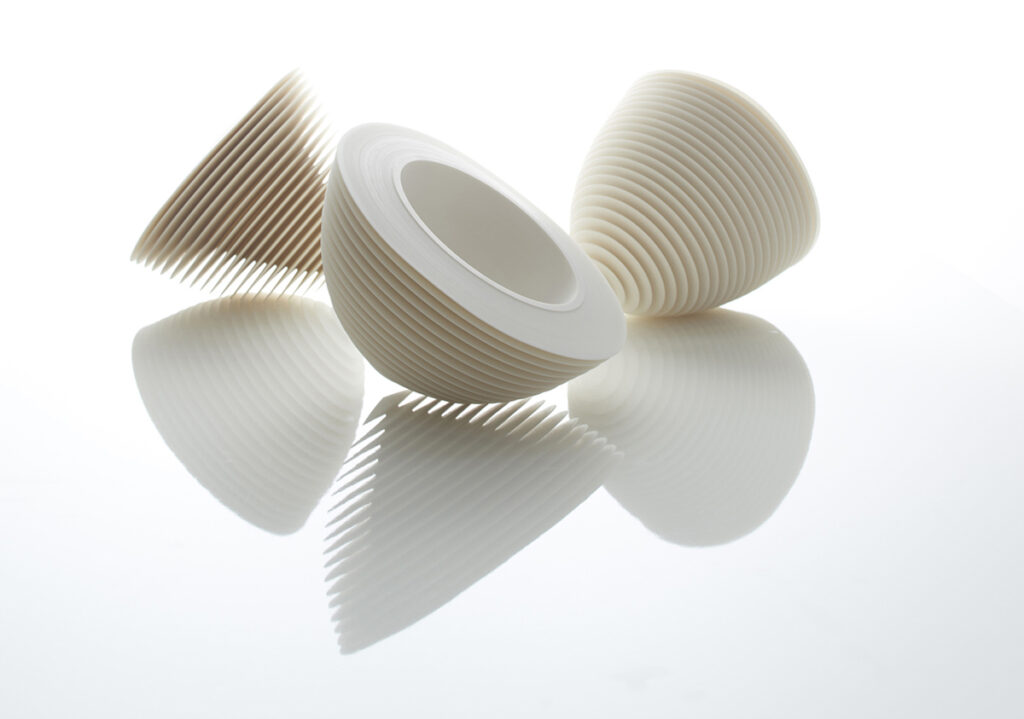
Three Floating Bowls. H 19cm. Parian. Photo Credit Sylvain Deleu
Balance
The sense of balance and of the piece floating defies its objecthood and moves it into the realm of ephemerality.
Blue Floating Bowl 19.43 H 13cm Parian and soluble cobalt, photo credit Jon Furley
Technique
The pieces are wheel thrown with very thick walls. They are dried slowly before being turned on a lathe. Then they are fired. There is some grinding done with diamond in order to finish surfaces and create the standing point of the piece.
When did you introduce colour into you work and why?
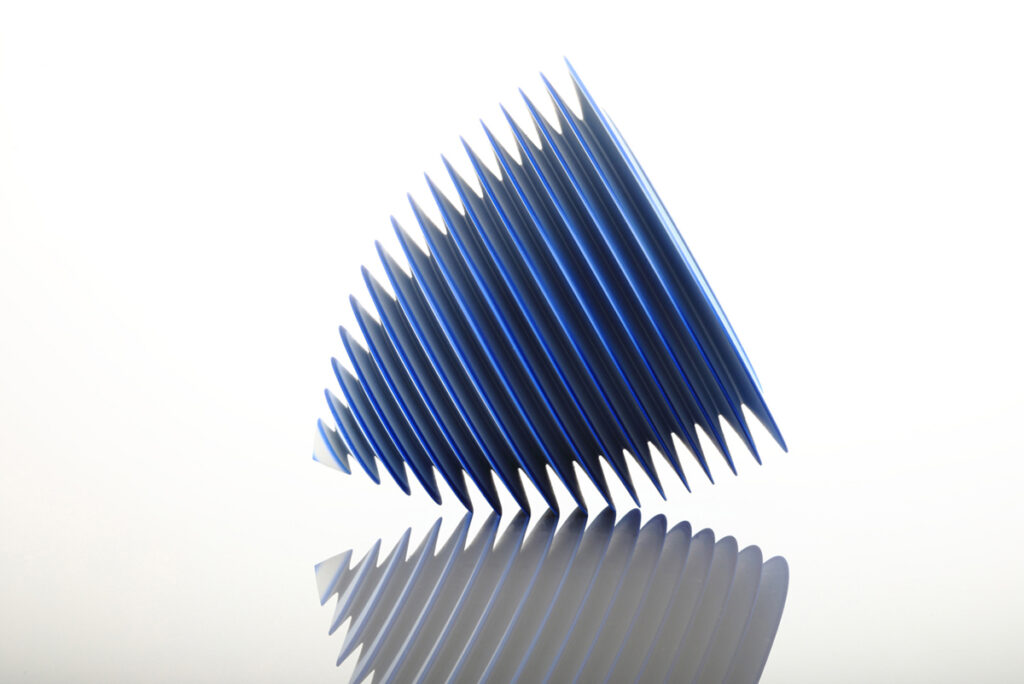
Blue Floating Bowl 19.43 H 13cm Parian and soluble cobalt. photo credit Jon Furley
When I first developed this body of work, I kept it monochrome. This was because I was researching light and shadow and needed to reduce the variables to understand what was going on. The use of colour originated with my work on paper. I am always interested in the interplay between form and surface and didn’t want to use an applied surface. I use a process where the colour migrates right through the form, much in the way that ink moves on paper with the encouragement of water. The colour is dictated by process and chemistry rather than by selecting from a palette.
Discuss the need for perfection in your work?
I am interested in skill and craftsmanship, although not as ends in themselves. The work does take a lot of skill and I do seek some kind of perfection. There is however a subtle interplay with the material and the transformation of process. The pieces do move and distort slightly in the kiln and I enjoy this interaction and undermining of mechanical perfection.
Discuss how the viewer can make your work move visually?
The simple answer to this is time. Look, look and look again. With every change in your viewpoint and in the lighting conditions you will see something different. I am still surprised by pieces that have been in my studio for years when I see an aspect of their presence I have never perceived before.
How do you sign you work?
I etch an initial monogram into the pieces once they are totally finished, along with a unique number including the year of making.
Your work is in many collections. Take one piece and explain why this piece going to this collection was so important to you career?
This is in the collection of the Museo Internazionale delle Ceramiche in Faenza Italy. It was acquired as part of winning a major prize at the Premio Faenza Biennale. This came at an important point to me and was a great boost to my career. I love to work internationally, and another aspect of the prize was a residency at Officine Saffi in Milan, which sowed the seeds of a new body of work which is very slowly germinating in my studio.
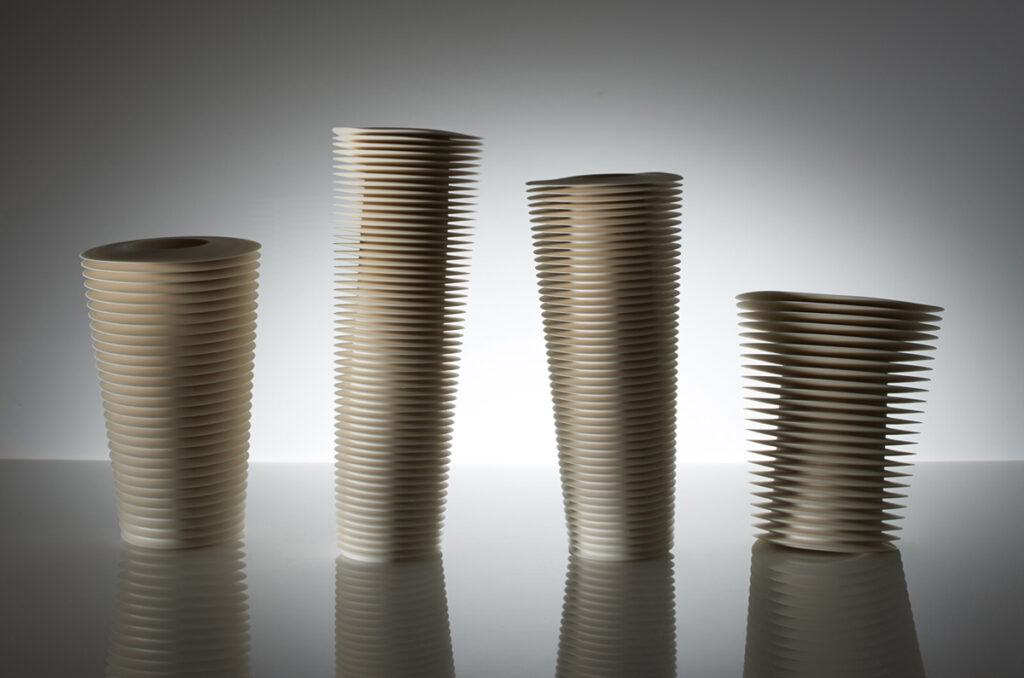
‘Four Leaning Vessels’. Parian. H 32cm. Photo credit Sylvain Deleu.
With the current pandemic, what advice would you give to both up coming artists and practicing artists.
I have been very fortunate to have been able to keep working as I have my own studio which I can walk to. I have never before been more grateful for that. It is difficult to give advice, but perhaps the key thing is as at any time to find a way to keep making work that you believe in.
What is something positive that has come out of your time during lockdown?
A little bit of progress with the slow germination I mentioned above and some ideas about new forms for my current work.
Contact:
Nicholas Lees
nicholas.lees@network.rca.ac.uk
Deborah Blakeley, Melbourne, Australia
Interview by Deborah Blakeley, June 2020
Think a colleague or friend could benefit from this interview?
Knowledge is one of the biggest assets in any business. So why not forward this on to your friends and colleagues so they too can start taking advantage of the insightful information the artist has given?
Other artists you may be interested in:


